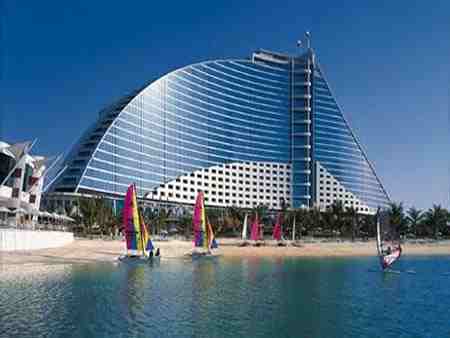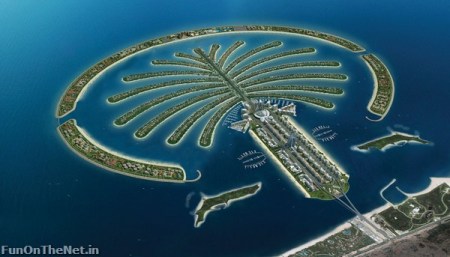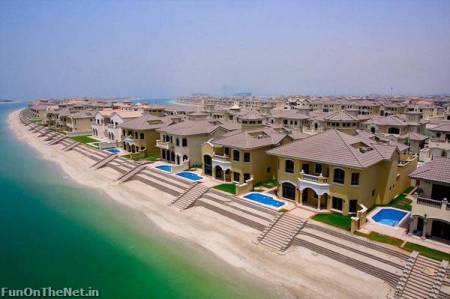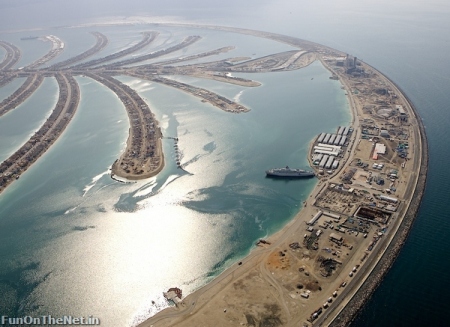Jumeirah is a diverse destination whose residents are the Europeans to the Filipinos to the Pakistanis; a mixed Little Europe, Karachi and Manila. Jumeirah is much favoured by Europeans due to the ease of access of the beach, Beautiful villas are seen here. Jumeirah Beach, Jumeirah Beach Residence’s the Walk and Jumeirah Mosque are the top attractions.
There are endless water-sport opportunities in and around Jumaeirah. Dubai has some of the whitest and sandiest beaches in the world with ocean temperatures ranging from 22°C in winter up to 35°C in summer. There are few wave breaks and the strong winds can make swimming difficult. The water is also very salty so many prefer to use their hotel swimming pool. Diving activities have been severely affected by offshore construction work for the Palms and The World; consequently, long boat trips are necessary to reach wreck sites. Alternatively, one can make the 90 minute road journey to the E coast Emirate of Fujairah or the Sharjah enclave, Khor Fakkan, for top class diving on coral reefs supporting extensive marine life.
Aside form the beach, Jumeirah and the wider areas of Dubai have many attractions and things to do and see:
- Burj Khalifa, At 828 metres and 160 floors, this is the world’s tallest structure by a long way, over 300m taller than the previous contender in Taipei. The observation deck at the 124th floor is also said to be the highest in the world. Already dominating the Dubai skyline, the newly opened tower houses nine hotels and a Las Vegas-inspired fountain system. The visitors’ entrance is located at the lower ground floor of Dubai Mall. Tickets cost Dhs 100 or Dhs 400 if you do not want to queue.
- The Dubai Fountain. At 900 ft in length and sporting a jet that shoots water up to 500 ft, the Dubai Fountain is indeed the world’s largest dancing fountain and one with a very enticing display – a definite must see. The show starts every evening at the Burj Dubai Lake. Easy way to approach it is via the Dubai Mall.
- Burj al-Arab hotel. For a real glimpse into “how the other half lives”, (self-proclaimed as the only 7 star hotel in the world), afternoon tea, or cocktails, may be an interesting experience. Entry to the hotel requires a reservation which will be confirmed at the entry gate, although residents of adjacent Jumeirah hotels may be able to visit by arrangement. Other tourists may occasionally be able to book tours of the hotel itself, however these will not run when the hotel is full. A “very smart casual” dress code applies. Reservations are usually required about a month in advance for a room, but a few days will generally suffice for a meal.
- Dubai Marina. One of the newer and more popular areas of Modern Dubai, both with residents and tourists. It offers numerous features such as a phenomenal skyline, world class hotels, a fabulous beach, a mall, and 2 different walkways (The Walk and Marina Walk) with coffee shops, restaurants, and shops. Marina Walk is right on the “Marina water”, and there are many yachts there. You can rent a yacht for a cruise around the area. The Walk has a nice open market run from October till May, every Fridays and Saturdays at daylight.
- Palm Islands. The three largest artificial islands in the world are located just off the coast of Dubai; a major urban development to add a significant amount of upscale beachfront property to the area. Each of the islands is shaped like a palm leaf, with a trunk connected to the mainland, fronds extending from the trunk, and a crescent (a breakwater encircling the trunk and fronds). Of the three planned, the Palm Jumeirah, at 5km square and near Dubai Marina, is the only one yet open, connected to the mainland by a freeway bridge and a monorail and sporting marinas, luxury resorts, and upscale shopping areas.
- Al Ahmadiya School, Deira. Built in 1912, this was Dubai’s first school and has now been nicely restored. It would be a stretch to call the exhibits of old reed pens and diplomas fascinating, but they’ve tried pretty hard, and if nothing else, the air-con and clean toilets may come in handy. Free entry.
- Bastakiya District. One of the last remaining pockets of Old Dubai, home to many reconstructed buildings in the traditional style. While information on the structures is slim here (see the museum in preference), the atmosphere is very evocative and there are plenty of delightful art galleries and cafes to explore.
- Dubai Museum, Al Ibn Abi Talib Road, ph: +971 (4) 353-1862. A must-see for anyone interested in the social history of the Emirate (and indeed the country). A visit starts at the al-Fahidi fort, which has a few examples of the traditional reed houses and other artifacts, but isn’t much to look at. The more interesting part is the modern extension built underneath the fort, showcasing Dubai’s history using the latest technology and culminating in a reconstructed souq from the pearling days, complete with authentic sights and sounds. It is quite fascinating to see the speed at which the transition from poor pearling village to modern metropolis occurred. Admission 3AED.
- Jumeirah Mosque, Jumeirah Road, Jumeirah 1 (opposite Palm Strip Mall). Is the largest in the city, and a wonderful example of Islamic architecture. Built in the medieval Fatimid tradition with the interior decorated with elaborate Arabic calligraphy. It is one of few mosques in the city open for visits by non-Muslims, the Sheikh Mohammed Centre for Cultural Understanding conducts special tours for non-Muslims to help promote understanding of Islam. Guided tours are available on Tuesday, Thursday, and Sunday beginning at 10AM, followed by a question-and-answer session. Located on Jumeirah Road, the mosque is an especially great place to visit in the evening when it’s dramatically illuminated by floodlights.
- Shindagha District — Home to the open museums of the Heritage Village, and has the home of former Sheikh Rashid Al-Maktoum.








0 comments:
Đăng nhận xét